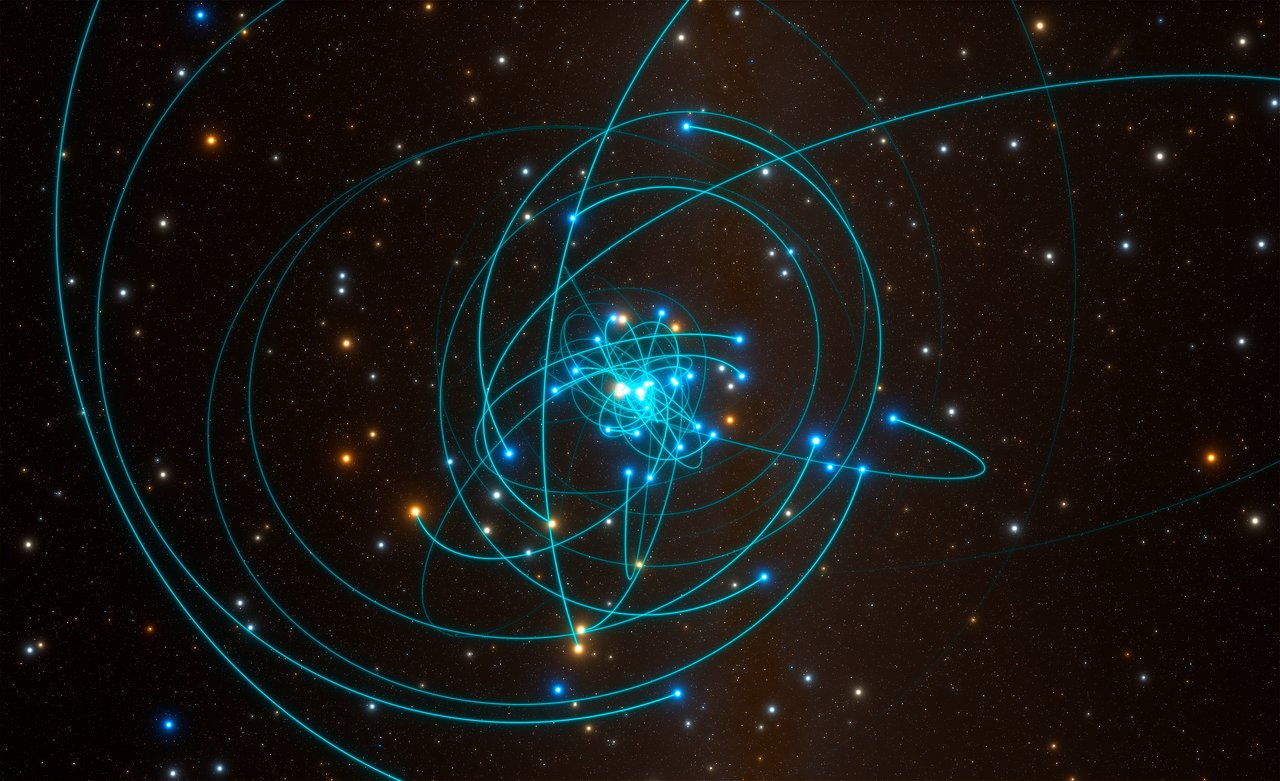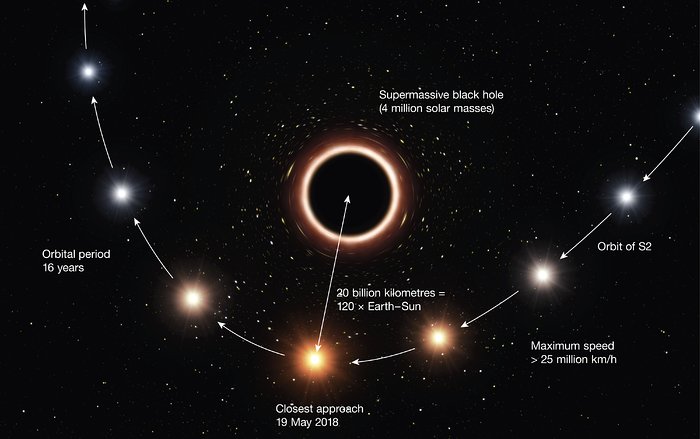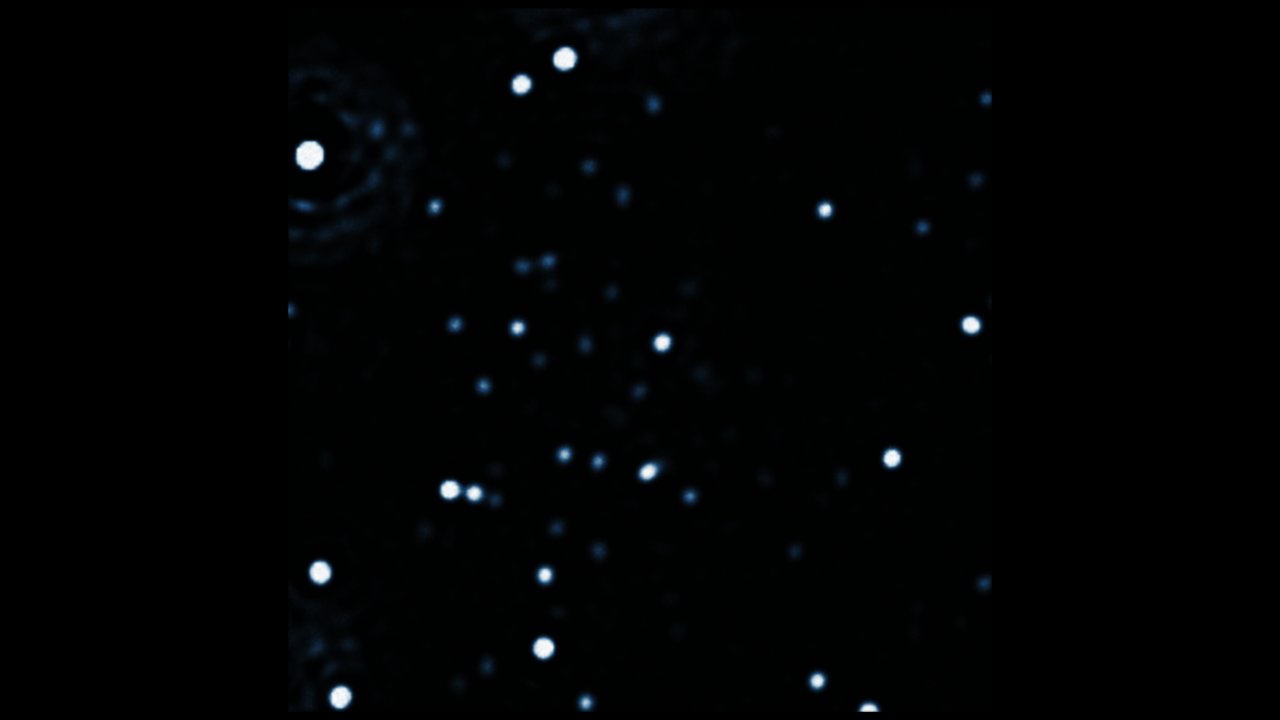Star Zooms Past Monster Black Hole, Confirms Relativity
The stars of the Milky Way orbit a gargantuan black hole called Sagittarius A*, which is generally quiet as viewed from Earth, except for ripping apart the occasional object that ventures too close. The black hole's mass is 4 million times that of the sun, and it exhibits our galaxy's strongest gravitational field, making it — and a small group of stars orbiting it at high speed — a perfect proving ground for the extreme effects predicted by Einstein's theory of general relativity.
For 26 years, researchers have been observing the center of the Milky Way using instruments from the European Southern Observatory (ESO). "The galactic center was our laboratory to test gravity," Odele Straub, an astrophysicist at the Paris Observatory and co-author of the new study, said at an ESO news conference July 26. [Einstein's Theory of Relativity Explained (Infographic)]

Astronomers have used new infrared observations from the GRAVITY, SINFONI and NACO instruments on ESO's Very Large Telescope in Chile to follow a star, known as S2, which is part of a group of fast-moving stars orbiting the supermassive black hole, located 26,000 light-years from Earth.

"Redshift tells us how gravity affects photons as they travel through the universe," Andrea Mia Ghez, an astronomer and professor in the Department of Physics and Astronomy at the University of California, Los Angeles who was not involved in this research, told Space.com.
The supermassive black hole's gravitational field stretched the light leaving S2, and the change in the wavelength of light from S2 aligns with what is predicted by Einstein's theory, according to the statement.
The new measurements and results don't agree with what would be predicted by the simpler, Newtonian theory of gravity, the researchers said at the news conference. Frank Eisenhauer, senior staff scientist at the Max Plank Institute for Extraterrestrial Physics and principal investigator for GRAVITY and the SINFONI spectrograph, showed a vivid graph highlighting that divergence at the ESO news conference — reading "Einstein 1:0 Newton" — eliciting cheers from the audience.
This is the first time such a deviation from the Newtonian theory of gravity has been observed in a star around a supermassive black hole, the researchers said in the statement, although it was the second time they observed S2 around the black hole; they've been tracking the system for more than two decades. Last time it passed by, 16 years ago, the measurements' resolution wasn't good enough to pick up relativity's effects.
Sign up for the Live Science daily newsletter now
Get the world’s most fascinating discoveries delivered straight to your inbox.

"Getting this law right is super important," Ghez said. Even if you don't have it right, or you work with an incorrect understanding of gravity — even on a small scale — those mistakes may have accumulated on a larger scale, she added.As human beings on Earth, we fall, we drop things and we don't float off of the planet into space; from an everyday perspective, we understand gravity quite well. However, of the different laws of physics, "gravity is the least tested, although [it's] the one we understand from a human existence the best," Ghez said. This new research helps to solidify our understanding of gravity on a larger scale.
This work shows how gravity acts near a supermassive black hole, thus improving scientists' understanding of the force and its effects, the researchers said. "Here in the solar system, we can only test the laws of physics now and under certain circumstances,"Françoise Delplancke, head of the system engineering department at ESO and co-author of the new study, said in the statement. "So it's very important in astronomy to also check that those laws are still valid where the gravitational fields are very much stronger."
Astronomers will continue to observe and study S2 and hope to soon show general relativity's effect on a small rotation of the star's orbit as it travels away from the supermassive black hole, the researchers said.
The results of the new research were published online today (July 26) in the journal Astronomy & Astrophysics.
Email Chelsea Gohd at cgohd@space.com or follow her @chelsea_gohd. Follow us @Spacedotcom, Facebook and Google+. Original article on Space.com.
Chelsea Gohd joined Space.com as an intern in the summer of 2018 and returned as a Staff Writer in 2019. After receiving a B.S. in Public Health, she worked as a science communicator at the American Museum of Natural History. Chelsea has written for publications including Scientific American, Discover Magazine Blog, Astronomy Magazine, Live Science, All That is Interesting, AMNH Microbe Mondays blog, The Daily Targum and Roaring Earth. When not writing, reading or following the latest space and science discoveries, Chelsea is writing music, singing, playing guitar and performing with her band Foxanne (@foxannemusic). You can follow her on Twitter @chelsea_gohd.










